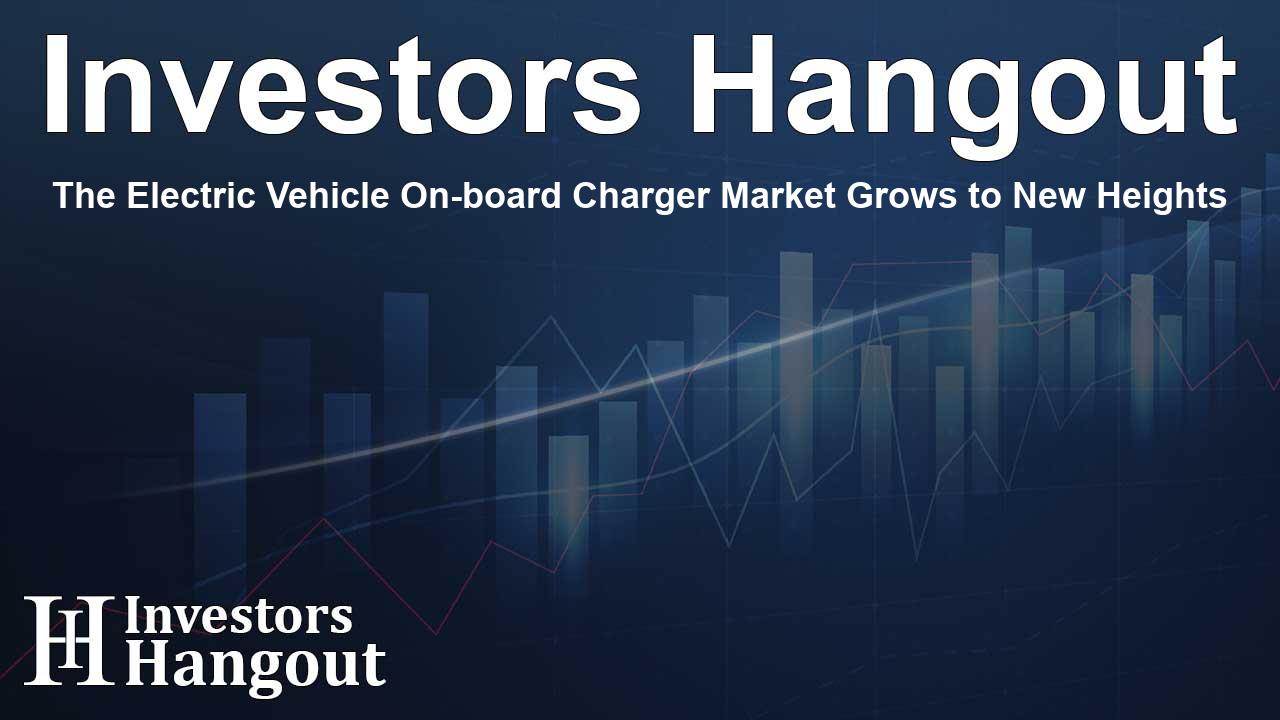The Electric Vehicle On-board Charger Market Grows to New Heights

Explosive Growth in the EV On-board Charger Market
The global Electric Vehicle (EV) On-board Charger Market, which was valued at US$6.5 billion, is set to soar to US$15.7 billion by 2031. This projected growth is being driven by a robust Compound Annual Growth Rate (CAGR) of 12.4% from 2024 to 2031. The estimates come from a detailed analysis conducted by Stratview Research.
Key Market Insights
The EV On-board Charger Market is segmented based on several factors including Power Flow types, Propulsion types, Vehicle types, and Power Rating types. As the automotive industry pivots towards electrification, understanding these segments becomes crucial for stakeholders.
Power Flow Type
EV chargers feature either unidirectional or bidirectional power flow. Currently, unidirectional on-board chargers (OBCs) dominate the market owing to their cost-effectiveness and integration with existing infrastructure. These chargers are primarily utilized in entry-level and mid-range EVs, where affordability is key.
Meanwhile, the growth of bidirectional OBCs is anticipated to accelerate as demand arises for innovations like vehicle-to-grid (V2G) technology. However, the higher initial costs and regulatory hurdles present short-term challenges to their widespread adoption.
Propulsion Type
The market segments further into Battery Electric Vehicles (BEVs) and Hybrid Electric Vehicles (HEVs). BEVs are expected to remain at the forefront of growth as they exclusively utilize electric power. This trend emphasizes the necessity for advanced OBCs that can efficiently manage the energy needs of these vehicles, especially as they incorporate larger battery systems.
As charging networks expand to support higher-powered chargers, EVs equipped with OBCs rated above 5 kW will likely thrive, positioning them favorably for sustained growth.
Vehicle Type Segmentation
The vehicle types classified in this market are Light Vehicles (LV) and Medium & Heavy Commercial Vehicles (M&HCV). Light Vehicles are anticipated to hold a significant share due to the increasing demand for passenger cars and small electric vehicles. Supported by government incentives and growing consumer preferences for environmentally friendly transportation, this segment is reinforcing the overall market growth.
Power Rating Types
The Power Rating for OBCs falls into three categories: below 3 kW, between 3 kW and 5 kW, and above 5 kW. On-board chargers rated above 5 kW are projected to be the market leaders in the coming years, driven by the preferences of mid-range and high-end EVs that require efficient charging solutions. The push for faster charging capabilities is leading automakers to include more powerful OBCs in their new models.
Regional Market Dynamics
The Asia-Pacific region is expected to maintain its position as the largest market for EV on-board chargers. The dramatic rise of the EV industry in countries like China and India is fueled by robust government incentives, environmental regulations, and a growing appetite for cleaner transportation.
China, in particular, stands as the world’s largest EV market. The surging demand for on-board chargers coincides with the ongoing development of EV infrastructure, setting the stage for significant growth in this segment.
Drivers of Market Growth
Several factors are fueling the expansion of the EV On-board Charger Market:
- Increased adoption of electric vehicles driven by environmental awareness and fuel savings.
- Government incentives such as subsidies and tax rebates encouraging electrification.
- Expansion of charging infrastructure, including fast-charging stations enhancing the need for efficient OBCs.
- Technological advancements leading to smarter, more efficient charging solutions.
- Improvements in battery performance necessitating more advanced chargers for optimal energy management.
Competitive Landscape
Several key players are influencing the EV on-board charger market landscape:
- Valeo
- BYD Auto Co., Ltd.
- BorgWarner Inc.
- Tesla, Inc.
- Toyota Industries Corporation
- KOSTAL Group
These companies are actively investing in innovation and expanding their product lines to capture market share as the demand for EV charging solutions rises.
Frequently Asked Questions
What is the expected growth of the EV On-board Charger Market?
The market is projected to grow from US$6.5 billion to US$15.7 billion by 2031, at a CAGR of 12.4%.
Which regions are driving growth in the EV On-board Charger Market?
The Asia-Pacific region is expected to remain the largest market, particularly due to strong demand in China and India.
What types of EVs are primarily influencing the charger market?
Battery Electric Vehicles (BEVs) are anticipated to dominate the OBC market as they solely rely on electric power.
What are the challenges for bidirectional on-board chargers?
Bidirectional OBCs face higher costs, regulatory uncertainty, and infrastructure limitations that impede their widespread adoption.
Who are the top players in the EV On-board Charger Market?
Prominent companies include Valeo, BYD Auto Co., Ltd., BorgWarner Inc., Tesla, Inc., and Toyota Industries Corporation, among others.
About The Author
Contact Evelyn Baker privately here. Or send an email with ATTN: Evelyn Baker as the subject to contact@investorshangout.com.
About Investors Hangout
Investors Hangout is a leading online stock forum for financial discussion and learning, offering a wide range of free tools and resources. It draws in traders of all levels, who exchange market knowledge, investigate trading tactics, and keep an eye on industry developments in real time. Featuring financial articles, stock message boards, quotes, charts, company profiles, and live news updates. Through cooperative learning and a wealth of informational resources, it helps users from novices creating their first portfolios to experts honing their techniques. Join Investors Hangout today: https://investorshangout.com/
The content of this article is based on factual, publicly available information and does not represent legal, financial, or investment advice. Investors Hangout does not offer financial advice, and the author is not a licensed financial advisor. Consult a qualified advisor before making any financial or investment decisions based on this article. This article should not be considered advice to purchase, sell, or hold any securities or other investments. If any of the material provided here is inaccurate, please contact us for corrections.
